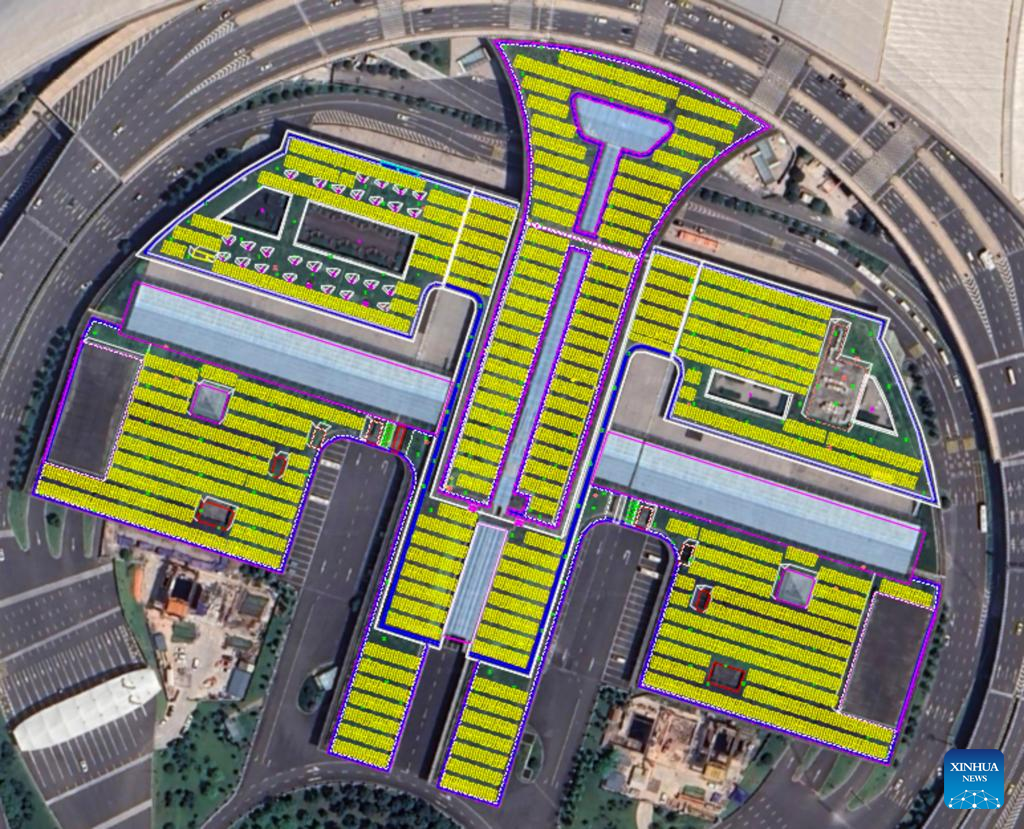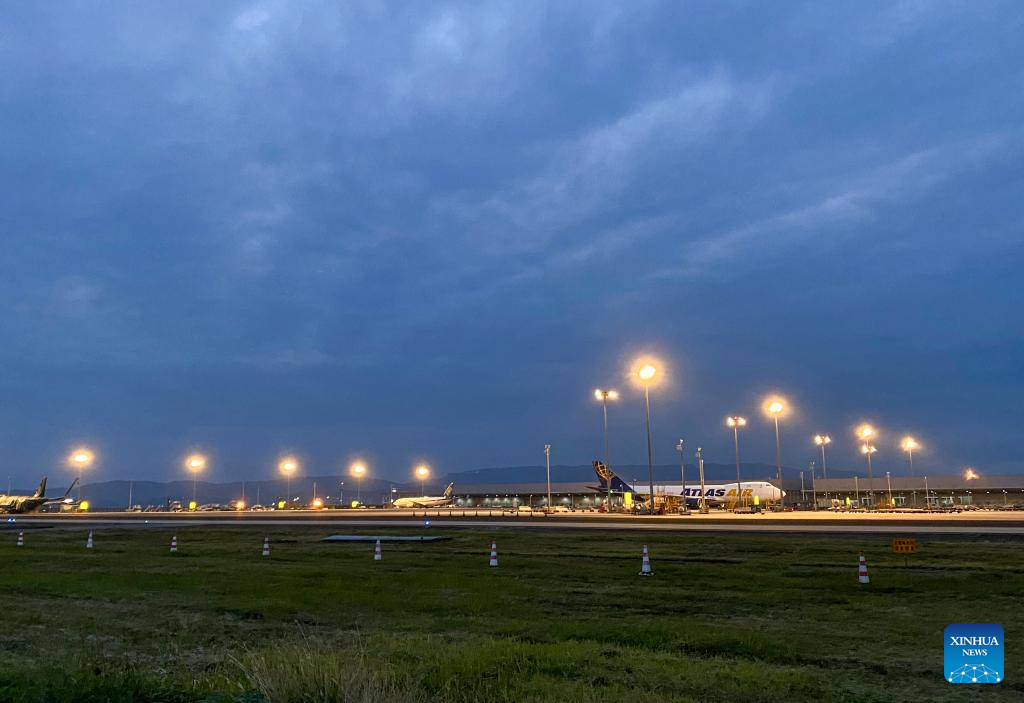
This undated file photo shows the intelligent battery swap and charging station for electric vehicles on the airside of Chongqing Jiangbei International Airport in southwest China's Chongqing. (Chongqing Airport Group/Handout via Xinhua)
CHONGQING, Dec. 31 (Xinhua) -- Like changing tides, the sea of shimmering colored lights brighten and dim to guide aircraft at an airport in southwest China's Chongqing Municipality, a mountainous city famed for its hot pot cuisine.
The brightness of the airport increases to guide aircraft during takeoffs and landings at night, and then dims once operations are complete.
Thanks to its intelligent lighting system, the Chongqing Jiangbei International Airport (Chongqing Airport) can automatically and flexibly adjust its lighting to suit the demands and conditions of its different areas while ensuring flight safety, according to the Chongqing Airport Group.
Chongqing Airport is demonstrating the green transformation of China's civil aviation industry, which ranks second globally in terms of transportation scale and accounts for over 20 percent of global air transport growth.
The energy consumption and carbon emissions of aircraft, airport ground vehicles and terminal buildings are key challenges to the airport's green transformation.
Targeting these challenges, Chongqing Airport has been promoting a slew of low-carbon endeavors by constructing distributed photovoltaic power generation facilities, utilizing new energy ground vehicles and improving charging facilities at the airport.
By the end of 2023, more than 22 percent of ground vehicles permitted to operate at the airport were new-energy vehicles, including shuttle buses, luggage trailers and passenger stair trucks.
Thanks to intensive green-transformation measures, the airport reduced its annual carbon emissions by 9,826 tonnes in 2022 and by 2,974 tonnes in 2023, according to statistics from the Chongqing Airport Group.
In late December, the Chongqing Airport began construction on a distributed photovoltaic power generation project with a planned annual electricity generation capacity of 24 million kilowatt-hours, which will account for about 10 percent of the airport's total annual electricity consumption.
The project is expected to be put into operation in the first half of 2025, and will help the airport reduce carbon emissions by about 20,000 tonnes per year.
Looking ahead, the airport will expand its green energy application scenarios, construct more new energy projects and boost its efficient use of clean energy, according to the airport group.
China has committed to the dual carbon goals of peaking carbon emissions by 2030 and achieving carbon neutrality by 2060.
Civil aviation authorities and airports across the country are working together to introduce various new measures, with green energy substitution being key to these changes.
On Sept. 19, China initiated a sustainable aviation fuel (SAF) program in several airports to promote a green, low-carbon transition in the aviation sector.
The move echoed the trend of SAF application in the global civil aviation industry. Made from renewable materials, SAF is a liquid alternative to conventional jet fuel that is capable of reducing carbon emissions by up to 80 percent over its life cycle when compared to standard jet fuel.
Initially, China's SAF program involves 12 flights operated by China Southern Airlines, China Eastern Airlines and Air China, with SAF being supplied at four airports. In 2025, the number of participants will gradually increase, according to the Civil Aviation Administration of China (CAAC).
China's civil aviation sector has been continuously intensifying efforts to reduce energy consumption and emissions in the coming years, taking intensive measures such as continuous fleet renewal, the use of new energy vehicles, and carbon footprint cuts for in-service aircraft and airports, the CAAC said. ■

This image shows a layout diagram of the photovoltaic modules at Chongqing Jiangbei International Airport in southwest China's Chongqing. (Chongqing Airport Group/Handout via Xinhua)

This photo taken on Dec. 5, 2024 shows the high-pole lights under an intelligent control system at a tarmac of Chongqing Jiangbei International Airport in southwest China's Chongqing. (Chongqing Airport Group/Handout via Xinhua)



